In today’s space-crunched world, the dining area is no longer a separate room. To create the effect of spaciousness, we have the open plan arrangement where the kitchen and the dining area are rolled into one large room with the latter being put to multipurpose use. While we do opt for TV dinners on the sofa in the living room at the end of long, stressful weekdays, the dining area hasn’t lost its value.
We go back to that space on weekends, lingering over brunches. We go back there when friends and family come over for potluck parties and homecooked meals. It is where we celebrate special anniversaries and birthdays with good food and drink. Our kids most often end up doing homework there as we whip up a quick dinner and talk them through their exam worries. For hours, we sit at the dining table meeting our deadlines, typing away rapidly on our laptops, fuelled by coffee.
It’s undeniable that the dining area has been the real heart of the home through the ages, and continues to be so. That’s why when we set up a new home, a new life, it’s important that extra attention is given to this little room. Here’s an essential guide to setting up your dining room, no matter big or small, and making it the heart of your life.
Style, décor, and colours
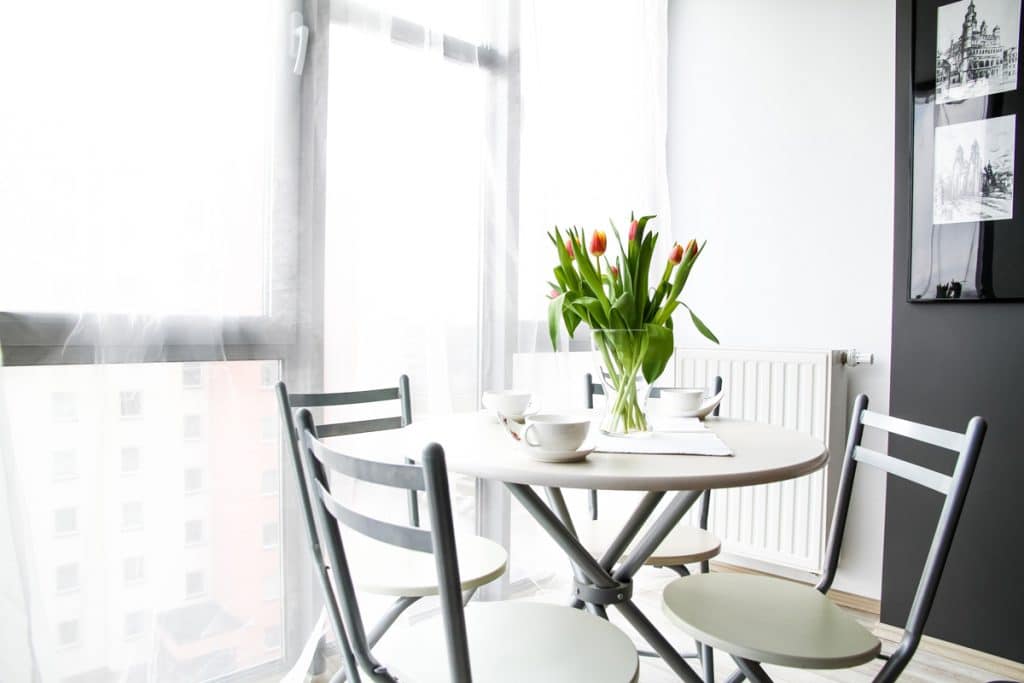 Is it a traditional look that you want to portray? Or a country house feel? Or are you all about clean whites and minimalism? Whatever may be your style, it should blend in with the rest of the house.
Is it a traditional look that you want to portray? Or a country house feel? Or are you all about clean whites and minimalism? Whatever may be your style, it should blend in with the rest of the house.
If you do have the luxury of having a separate, cut-off area as your dining room with ample space, then perhaps you could strive for a slightly elaborate look.
Top tip: Intricately patterned wallpapers with heavy curtains speak of a highly personal style.
If it’s a relatively smaller room and you are trying to create the illusion of more space, then try colours like orange or pastel green rather than white to make it a little more interesting. These colours also interact well with natural light and make the dining room look inviting and cosy.
The next step is to decide where you want the table and chairs to be.
Do you want it adjacent to the wall?
Or do you want it right in the middle?
Of course, if it’s a small area, then you might not have a choice but to keep it next to the wall. It helps to measure the room and decide which side you might want to leave free as an accessway. The size of the room will also help you decide the shape of your table, which is crucial to the overall appearance of the room.
Handle tables with care
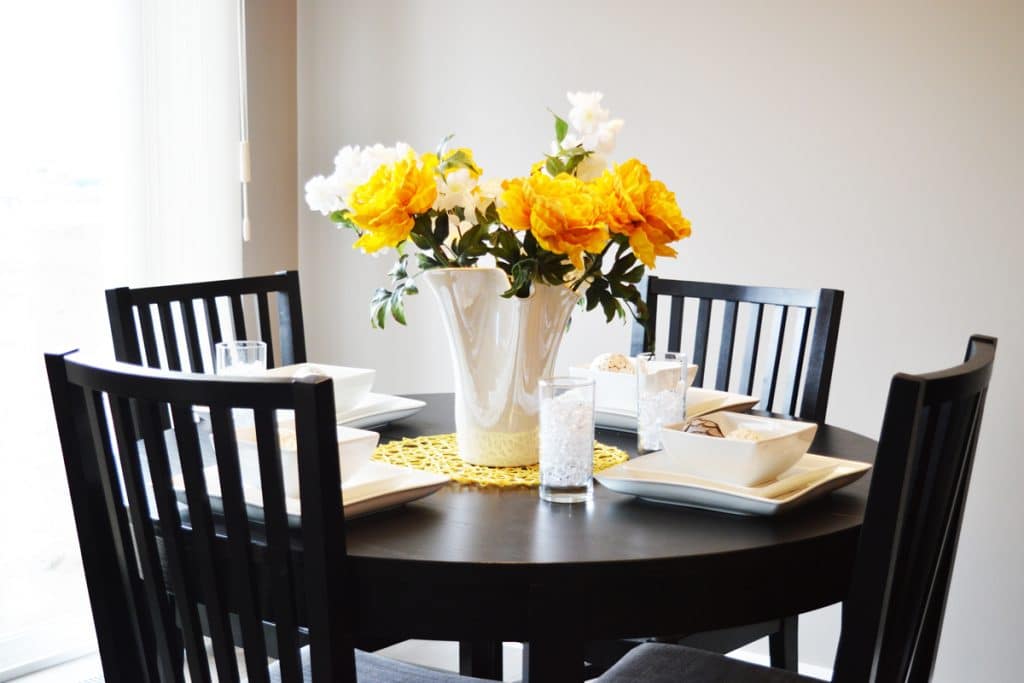 The table and the chairs are what really make the dining room what it is.
The table and the chairs are what really make the dining room what it is.
It’s the centrepiece and the place where all activity happens. We eat, entertain, and even work here many times. So, it’s of utmost importance that the table and chairs must be given due thought in terms of comfort.
If you are lucky enough to have a dining room that’s separate from the kitchen and living room, then make the best use of it.
Consider a rectangular or oblong table with six or even eight chairs and make it the cynosure of all eyes. Not only does it give you ample surface area, but it also gives an incentive to entertain and show off your culinary skills.
Be mindful of providing leg space underneath. A pedestal type table would be ideal as it provides the most leg room.
With a large, open plan area, the dining room has to accommodate multitasking and yet remain separate from the rest of the house to maintain its sanctity.
Top tip: Use dividers like fabric screens or maybe a row of plants to keep a tenuous boundary. This will help when you want the dining area to function as a quiet space where you need to put in some hours of concentrated work or simply read a book with a cup of coffee.
That means you also need to be comfortable with the feel and design of the space. Like rustic settings? You can easily pull off an inviting, lived-in farmhouse look.
Consider sturdy oak or rustic pine for that roughhewn texture. Keep it close to the wall and pair it with a bench on one side, and if possible by the window, so that people can lean against the wall and the sun streams in, lighting up the table.
Add a more contemporary touch with smooth, polished wood tables that are slimmer.
For a modern and no-frills look go for a sleek glass top or, dare we say, even a marble top. Classic yet contemporary styles can be achieved by combining both glass and marble, as unconventional as it sounds.
Whatever you go for, be conscious of the people who will use the table the most. That means if you have small kids, you might want to avoid getting a high-end mahogany table, which might get spoilt with food spillages or scratches.
Small rooms can make it big
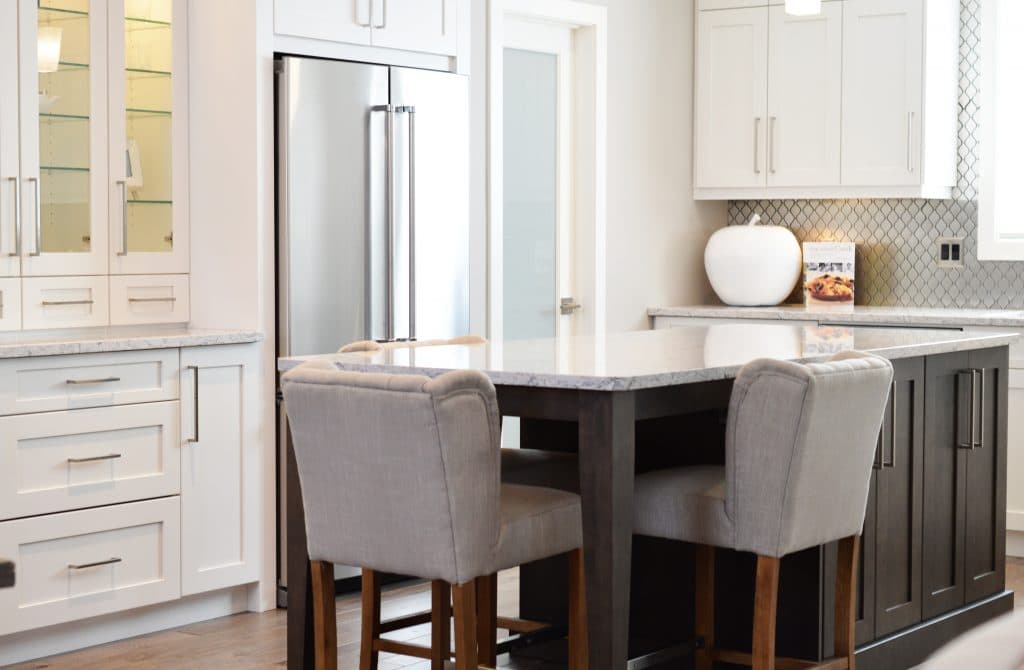 Small need not be bad. It can be chic. It can be stylish. Go for a round table to maximise space.
Small need not be bad. It can be chic. It can be stylish. Go for a round table to maximise space.
Adding a mirror to the wall will also enhance the room and give the effect of spaciousness. Only have the corner to set up your dining area? Not to worry. Get a heavy wooden table to highlight the corner and make it grander.
If you don’t need to hug the wall, consider trestle tables. Not only are these foldable, and hence ideal for small spaces, they also come in a variety of funky styles to suit any kind of decor you have in mind.
Small spaces can be a lot more fun as it’s easier to feel the impact of colour and design.
Spare thought for tablecloths
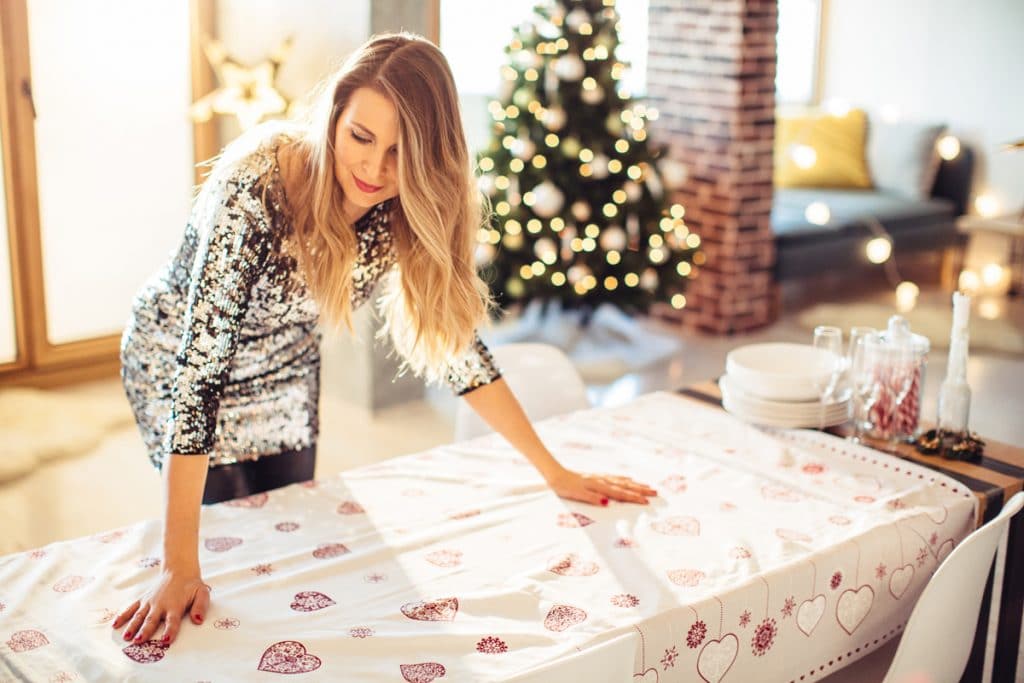 Should I keep a tablecloth or not? That’s a question that a lot of us ponder over. A tablecloth, of course, protects the table from damage.
Should I keep a tablecloth or not? That’s a question that a lot of us ponder over. A tablecloth, of course, protects the table from damage.
But tablecloths also have the power to transform a very ordinary table into something more exquisite.
A long tablecloth reaching mid-way to the floor will add a touch of elegance to any table. Couple it with a runner of a contrasting colour and turn up the style a notch. But if you have a really lovely piece of furniture as your table, then make the tablecloth a short one and show off those well-carved legs. Of course, a tablecloth is not necessary. It eventually comes down to the usage, and the looks and durability of the table.
Prioritise chairs that are comfortable
 Now that you have an idea about the kind of table you should have, selecting the chairs should be easier.
Now that you have an idea about the kind of table you should have, selecting the chairs should be easier.
The easy way out of making complex decisions is to go in for a dining table set where you would get matching chairs. But what if the chairs are not really the kind you want? What if they don’t seem too comfortable?
This is where putting in a little thought and time in choosing your chairs go a long way. Try out chairs that will blend in with the table you have, and also rate high on comfort and design. Ask yourself some questions before you make the plunge and buy them. Who will use it the most? How many people do you have to accommodate on average? What material will be easy to maintain? Making a list of these questions and jotting down carefully considered answers will enable you to spend more effectively.
If it’s a wooden table, then you could easily go for the industrial look that’s currently riding the top spot of interior design charts. Metal chairs with a slightly burnished look sporting dark colours would pair very well. So would wrought iron chairs, which are also sturdy.
Nicely upholstered wooden chairs with high backs look elegant. But they are also formal. So if casual is what you are looking for, then consider low-backed chairs in trendy colours.
Top tip: Glass-topped or marble tables will pair extremely well with heavy wooden or leather chairs.
Whichever you choose, make sure they are easy to maintain and clean, particularly if you have young children.
Choose the right lighting for the right effect
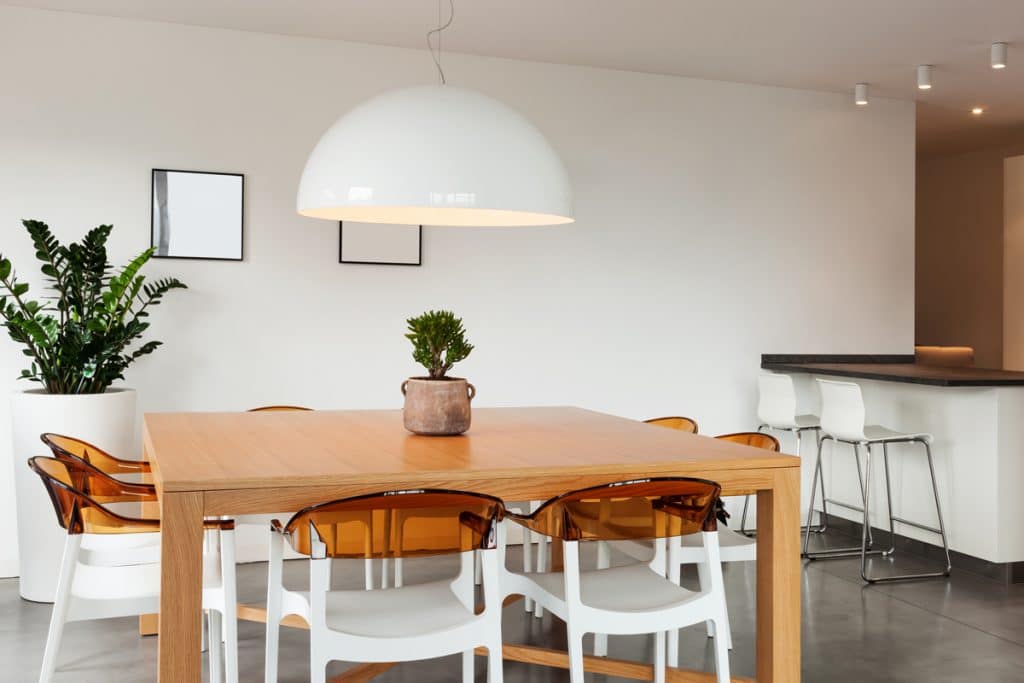 You could get the best table and chairs out there but could ruin it all by making the wrong choice in lighting.
You could get the best table and chairs out there but could ruin it all by making the wrong choice in lighting.
A dining table is a hard worker, as we mentioned before.
So, choose the right kind of light that suits every activity in the dining room.
Before you rush to buy the last piece of that stunning chandelier you saw at a half-price sale, think about how it would look in your home. If you have been gunning for that plush, upscale look then yes, it makes sense. But if you have kept it spare and bare otherwise, it will look only stick out like a sore thumb.
Coordinating lighting design is as important as its function.
Corner tables and small spaces would look great with a single overhanging piece rather than wall sconces, which might be better off in a larger room. The scale and height are very important when considering a single pendant. Experts recommend a space of at least 30 inches between the table and light for ceiling lights.
If it’s a small, round table, then having a single large central light that covers the whole table is the way to go. You could also play it up a bit by choosing two or three small pendants hanging at different heights.
Top tip: Edison bulb strings are all the rage in cafes right now. Consider these to add a very retro feel.
If it’s a six-seater rectangle or oblong table arrangement, then go for layer lighting with table lamps or hanging lights, plus some small fixtures on the wall for some added drama.
The strength of the light is also important. The dimmer and softer it is, the cosier and atmospheric it will be. Mood lighting is wonderful when you have your dinner parties or when you want to simply share a glass of wine and some quiet conversation. But dim lights might not be ideal all the time.
Consider having a dimmer for playing up the light for when your children work on their science projects or you read your newspaper.
Make space for storage
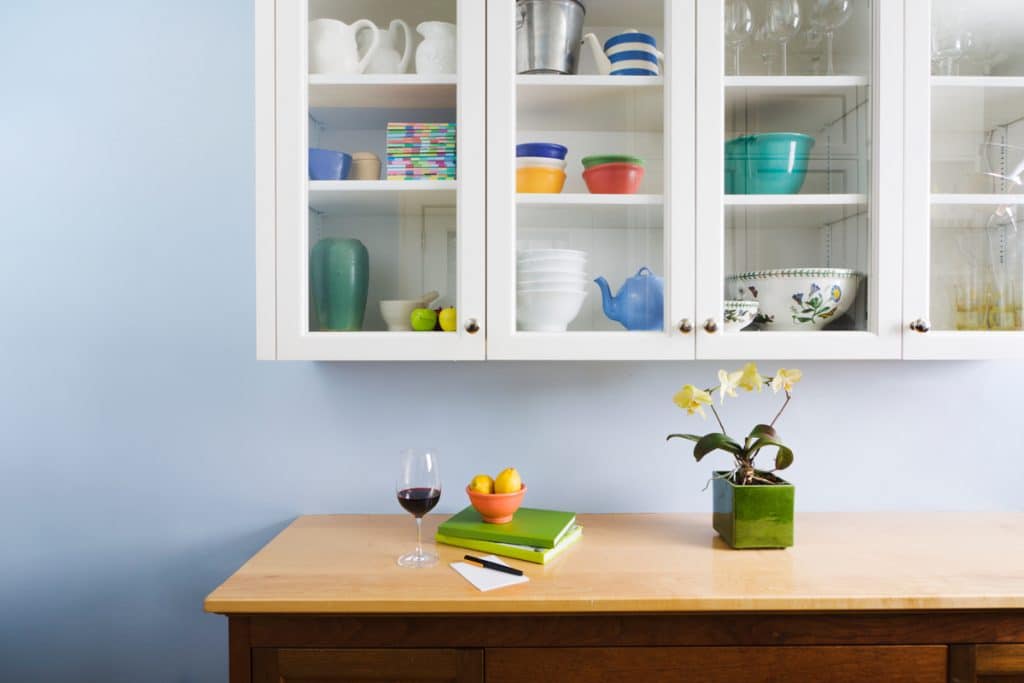 Got the table, chairs, and the lighting? Wait! You are not done just yet.
Got the table, chairs, and the lighting? Wait! You are not done just yet.
Round off your dining room setting with the necessary storage for your cutlery and serveware.
Again, the style of your storage should ideally match the rest of the setting.
Larger dining spaces will look good with a floor to ceiling hutch cabinet that can display the best of your plates and bowls while holding cutlery in the drawers beneath. Or if a more open look is what you want, then go for a wall-to-wall, floating credenza that will double up as a serving sideboard and storage.
A smaller version of the credenza would be perfect for small dining areas where storage is a luxury. Floating shelves along the wall are also perfect for displaying some of your favourite collectables as well as storing essential cutlery behind closed doors underneath.
With these tips in mind, you are on your way to creating a dining room that matches your style, personality and budget! Do you have a dining room you are especially proud of? Write in to us and we would love to feature it in our column!

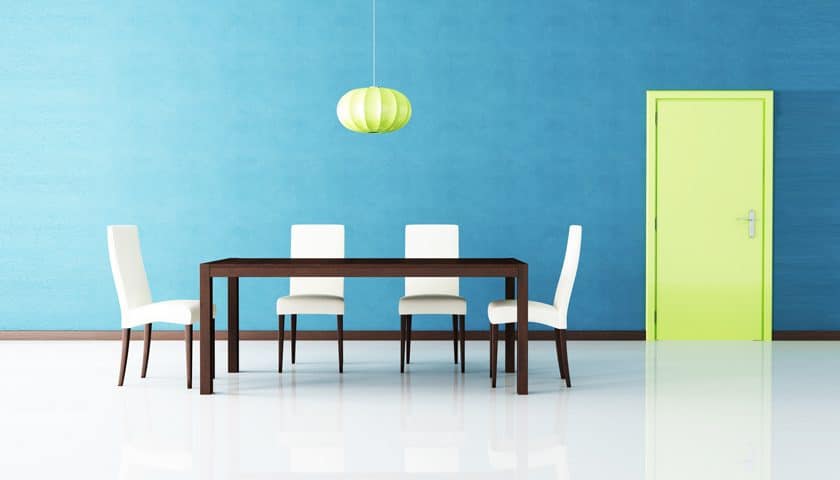
Wow its nice guide to set up dining room furniture.